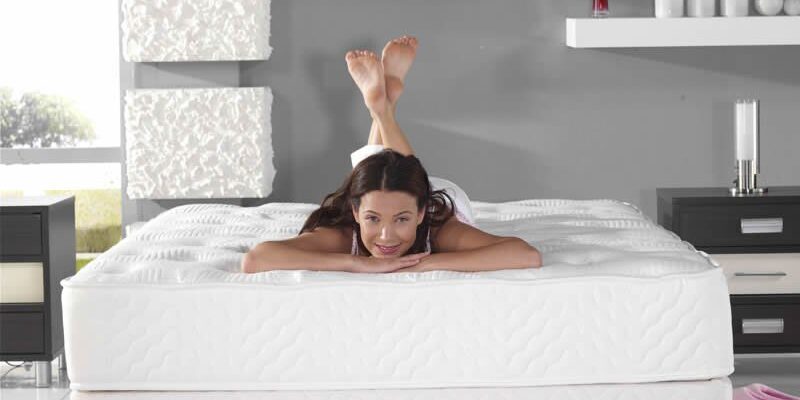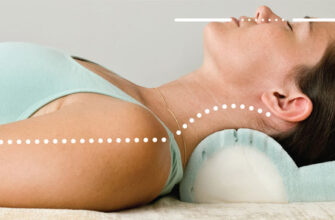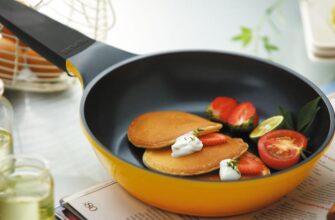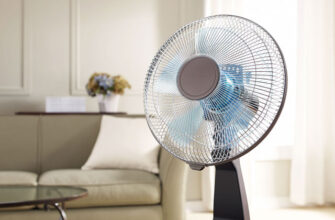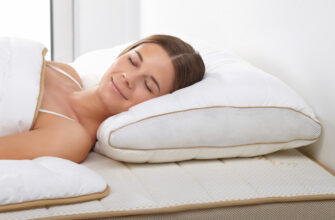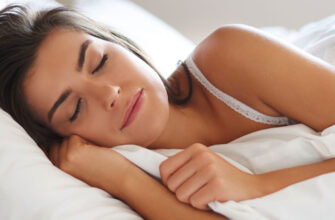A person's health, mental performance and mood depend on the quality of sleep. The better we get enough sleep at night, the better we feel during the day. Therefore, it is so important to create a comfortable environment for yourself while sleeping and take care of choosing a good mattress.
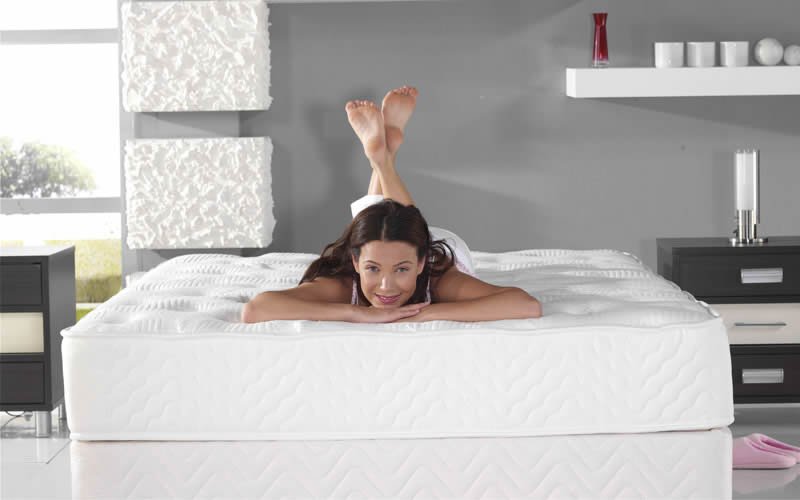
- The best mattress manufacturers – which company to choose
- Types and device of mattresses
- Spring mattresses
- Dependent spring block mattresses
- Advantages
- disadvantages
- Mattresses with independent spring block
- Advantages
- disadvantages
- Springless mattresses
- Advantages
- disadvantages
- Water mattresses
- Advantages
- disadvantages
- Air mattress
- Advantages
- disadvantages
- The main criteria for choosing a mattress
- Excipients
- Coconut coir
- Felt
- Latex
- Cotton wool
- Memory foam (memorix)
- Sintepon
- Polyurethane foam
- Wool
- Rigidity
- The size
- Additional options
- Winter summer
- Removable covers
- Which mattress to choose
- How much do mattresses cost
The best mattress manufacturers – which company to choose
A quality mattress is made from safe, environmentally friendly materials and ensures the correct body position during sleep. It does not collect dust, does not accumulate static electricity and does not cause allergic reactions. Therefore, a person wakes up in the morning 'like new'.
Mattresses of the following manufacturers meet these requirements:
-
Consul;
-
Ascona;
-
Ryton;
-
Torix;
-
Magnifex;
-
Vegas;
-
Plitex;
-
Ormatek.
Some mattresses can be equipped with additional functions, for example, automatic drying or heating technology. But when buying a product, you need to take into account that the price of the product depends on the number of 'bells and whistles'.
Types and device of mattresses
Mattresses can be spring and springless, as well as inflatable and water. Let's analyze the advantages and disadvantages of each of them.
Spring mattresses
The basis for spring models is a dependent or independent spring block. It is 'wrapped' in several layers of filler, which are in turn covered with a cover. The more layers, the better the mattress. Various materials can be used as filling: polyurethane foam, latex, coconut fibers (coir), etc. Latex, for example, is used to make the mattress soft, and coir to make it harder.
Dependent spring block mattresses
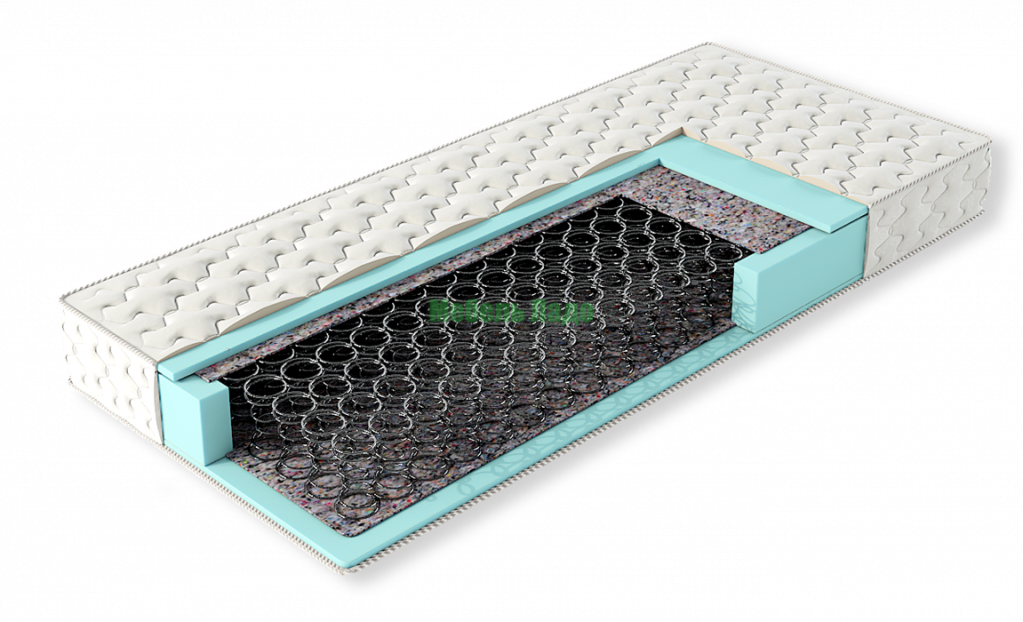
The springs in the dependent spring block are connected to each other. Therefore, if you press on one of them, it will affect the rest. The number of springs in the product must be at least 120 per m2.
Advantages
-
Low price;
-
Durability.
disadvantages
-
Such mattresses do not provide the proper orthopedic effect – they do not adapt well to the curves of our body;
-
Over time, the product sags;
-
Not recommended for use in children. Sleeping on such a mattress can cause abnormal formation of the spine;
-
Not suitable for couples with a large difference in weight. A person with a low weight will roll towards a heavier partner;
-
During operation, the springs loosen and begin to creak;
Mattresses with independent spring block
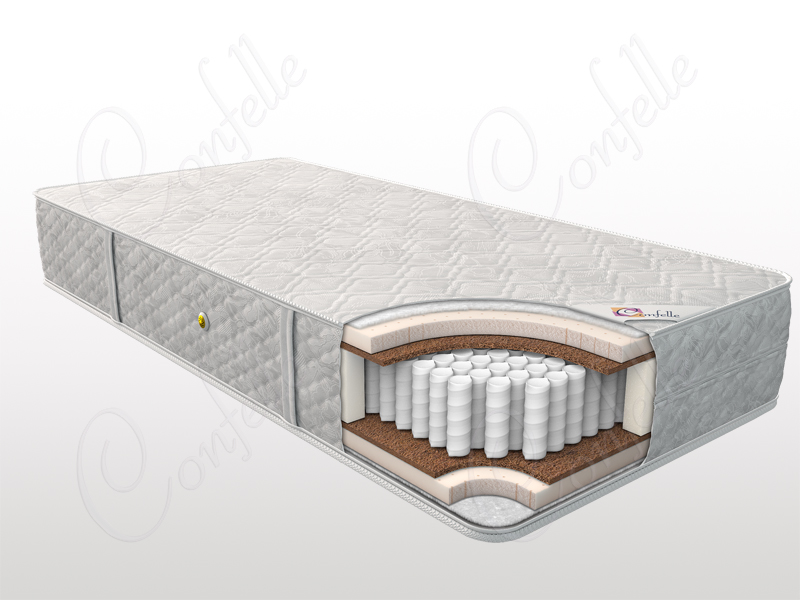
The springs in such a product are not connected to each other. Each spring is placed in a special case and functions independently of the 'neighbors'. The optimal number of springs in the product is 256 pcs. per m2, but it can be up to 1,700 pieces. per m2 in multipackages. The higher this value, the better and more comfortable the mattress.
Advantages
-
The spring block adjusts well to the bends of the body and distributes the load correctly;
-
Products can withstand heavy loads;
-
Long service life;
-
Silence during operation;
-
Mattresses can be used for couples with a large difference in weight and children;
disadvantages
-
High price;
-
Over time, the springs begin to creak (but later than in models with a dependent spring block).
Springless mattresses
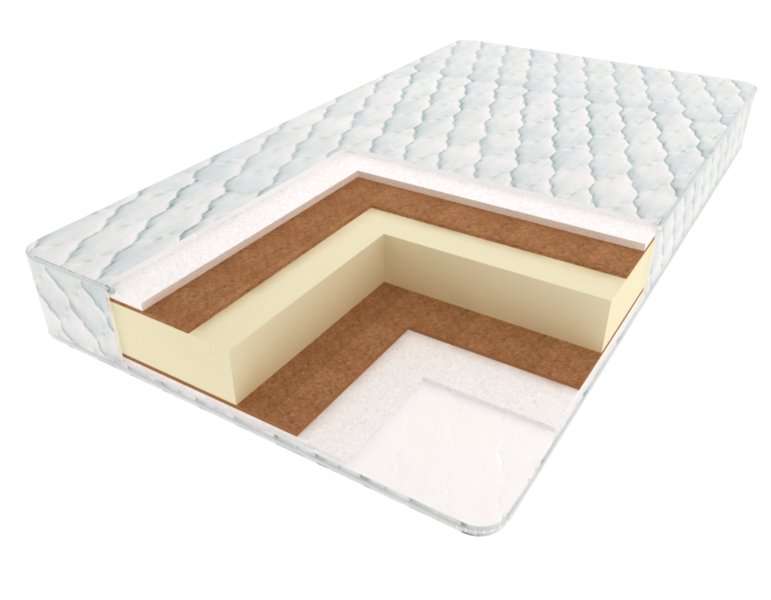
Monoblocks made of latex, felt, sheep wool, etc., which are covered with a special cover, can serve as the basis for springless mattresses. The main characteristics of the product depend on the properties of the filler. For example, coir mattresses are characterized by increased rigidity, therefore they are often recommended for children, and cotton models do not have any orthopedic properties, so they should be used only as a temporary measure.
Advantages
-
Do not emit any sounds during the entire period of operation;
-
Easy to transport;
-
They are lightweight;
-
A wide range of. You can choose a springless mattress for anyone: a small child, a person with a large weight, a married couple or a person suffering from problems with the musculoskeletal system;
disadvantages
- The disadvantages of springless mattresses depend on the properties of the filling (see 'The main criteria for choosing a mattress').
Water mattresses
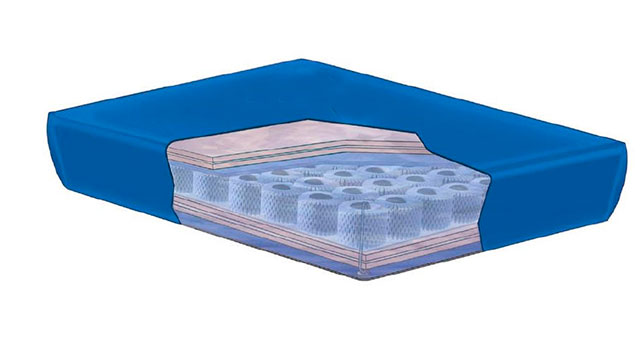
As a filler for a water mattress, special fibers and water are used, which is constantly heated. The heater of the product must be constantly connected to the electrical network (it consumes about 10-15 kilowatts per month), but even if the electricity is cut off for a day, the mattress will not have time to cool down.
Water mattresses can be single-chamber and multi-chamber. Single chamber products are not suitable for couples as partners feel all the movements of each other. In addition, with a large difference in weight, one person sleeps comfortably in a water hole while the other balances on a swollen surface. For married couples it is recommended to buy a mattress with two independent parts or a multi-chamber model.
Advantages
-
Adapt to the contours of the human body, correctly distributing the load;
-
Mattresses are equipped with a special heating function;
-
Long service life (15–20 years);
-
Mattresses do not electrify, do not accumulate dust and do not cause allergic reactions;
-
They have orthopedic and medicinal properties: they help with diseases of the musculoskeletal system, inflammation of the joints, rheumatism and cardiovascular diseases;
disadvantages
-
Large weight (from 100 to 900 kg). This greatly complicates the transportation of the mattress when moving, as well as rearrangement in the house and repairs;
-
Not suitable for those who like to sleep on a hard surface;
-
The water should be changed every two to three years and a special antifungal conditioner should be used annually.
-
High price;
Air mattress
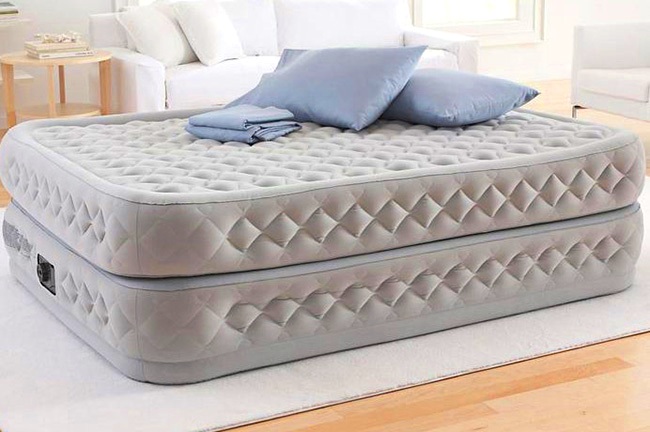
These items are great for temporary use. For example, they can be used during the arrival of guests, at the dacha or the beach. There is no need to talk about any orthopedic properties of these mattresses – if you sleep on them for a long time, this will negatively affect the health of the musculoskeletal system.
However, it should be noted that there are special orthopedic mattresses on sale. The manufacturers claim that the rigid surface and multi-chamber structure of these inflatable products ensures optimal muscle relaxation and the maintenance of the natural position of the spine. But these mattresses are only for sleeping – you can't swim on them.
Advantages
-
Low weight;
-
Affordable price;
-
Easy to transport;
disadvantages
-
They deflate over time, so they need to be pumped up regularly;
-
Not durable. Although manufacturers claim that the service life of air mattresses is about 10 years, in practice most products last no more than two to three years;
-
Many models have an unpleasant chemical odor that disappears over time;
-
The air in the mattress quickly cools down and it is cold to sleep on it;
-
Pets can bite or pierce the surface of the mattress with their claws;
-
The top of the product is often covered with flock, a material that collects dust and debris from all over the apartment. Therefore, it should be cleaned with a special sticky roller. The lower part of the mattress can be easily wiped off with a cloth.
-
Sleeping on ordinary air mattresses is uncomfortable – pains in the back and neck occur;
The main criteria for choosing a mattress
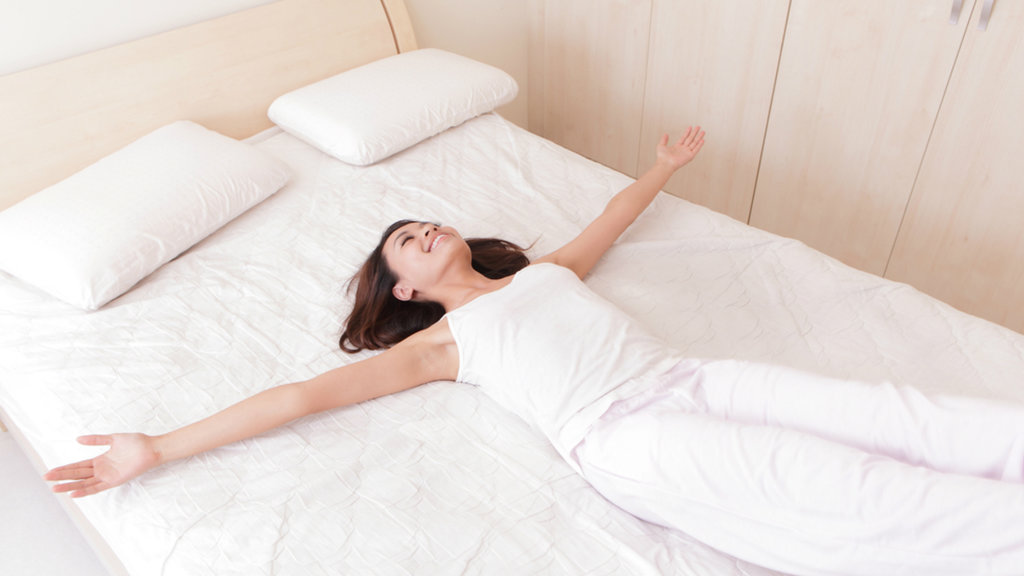
Excipients
Coconut coir
This material makes the mattresses hard. Therefore, products filled with coconut coir are recommended for small children, including newborns, as well as people with a large weight. They retain their shape well, allow air to pass through and do not cause allergic reactions.
If the coconut coir is used as a monoblock for a springless mattress, the product is more rigid. That is, the sensations will be as if you are sleeping on flexible boards.
Felt
This material is made from sheep's wool, which is sometimes combined with synthetic fibers. It can be used as padding between springs and / or as one of the layers of the mattress. Felt increases the level of rigidity of the product and protects the outer layer of the filler from the physical impact of the spring block. This extends the life of the mattress.
Latex
Often used as the main filler in springless models. It makes the mattress softer and more elastic. Latex products follow the contours of the human body, ensuring its correct position during sleep. In addition, they are well ventilated and quickly evaporate moisture.
Latex can be natural or synthetic. Synthetic material is cheaper than natural material, but it is more rigid and less wear-resistant. A product made from a natural substance will serve you much longer.
When using latex-filled mattresses, some users note that:
-
The product is too heavy (the average weight is about 35–45 kg for a double size);
-
A few years later, the mattress sags in the place where a person likes to sleep;
-
The mattress smells unpleasant, but over time, the smell disappears.
Cotton wool
Cotton mattresses are easy to transport and store. They have a low cost and are great for making a temporary bed. Therefore, they are often used in hospitals, temporary buildings, dormitories, etc.
Unfortunately, cotton mattresses have many disadvantages:
-
They do not have the proper orthopedic effect on the skeleton and muscle tissue of the sleeper;
-
Roll down quickly and become unusable;
-
Cotton mattresses are often home to dust mites and fungi.
Memory foam (memorix)
The shape memory foam was created by NASA researchers to reduce the strain on the human body when flying into space. The material 'remembered' the curves of the body and repeated them. But subsequently NASA abandoned its use, and memorix began to be used as a filler for mattresses.
Products made from this material provide proper support for the musculoskeletal system, adapting to the curves of the body. They reduce the load on the sleeper's body and prevent the compression of blood vessels. After the pressure on the mattress is released, the surface returns to its previous shape.
However, not everyone likes products with memorics. Users note that the mattresses have an unpleasant chemical odor. In addition, some report the occurrence of allergic reactions, headaches, increased fatigue that arose after purchasing products with Memorix. These health problems can be caused by purchasing low quality mattresses.
Sintepon
Springless products with padding polyester filler are lightweight and affordable. They are soft and comfortable, easy to transport and store – they fit in a backpack or car trunk. But such mattresses do not provide normal support for the musculoskeletal system, so they are not recommended to be used for a long time.
Polyurethane foam
This material is breathable due to its porous structure and can be used by people prone to allergies. The hardness of the mattress depends on the hardness of the polyurethane foam. For example, a regular foam mattress is not very durable, but polyurethane derivatives such as memory foam and artificial latex make the product more durable, wear-resistant and comfortable.
Wool
This material has excellent hygroscopic properties and provides good air circulation. But if the filling of the mattress consists only of wool, there will be no proper orthopedic effect.
Rigidity
Mattresses vary in firmness. Stiffness depends on the type of filler and the spring or springless unit used.
-
Soft mattresses are usually made from latex, cotton wool, memorix. They are often recommended for adults weighing less than 55 kg, retirees and patients suffering from back problems. The more filler is placed over the side of the springs, the softer the mattress.
-
Medium-firm mattresses are often made from latex, polyurethane foam, coke-coir, polyurethane foam. They are suitable for young people 13-25 years old, as well as those who weigh 55-90 kg.
-
Hard and medium-hard mattresses (made from coconut coir, felt, with a reinforced spring block) are often used for children under 12 years of age. This is necessary for the correct formation of the spine and the prevention of scoliosis. They are also recommended for overweight people.
-
The two sides of the same mattress can have different degrees of firmness. Therefore, if you want to change the product from hard to medium-hard, it will be enough to turn the mattress. By the way, regularly turning the mattress (every two to three months) increases its service life.
The size
The size of the mattress should be matched to the size of the bed. In addition, the product should be 15–20 cm longer than a person's height, and twice the shoulder width.
Mattresses can be single (about 0.9 m wide), one and a half (1.2 m) and double (1.4-1.6 m). The dimensions of standard mattresses for children are about 0.6 x 1.2 m.
Additional options
Winter summer
The mattress surface with this option is upholstered in two different materials. On the one hand (winter), thermoregulatory insulation (mainly wool) is used, and on the other (summer) – 'breathable' materials (cotton). This ensures the most comfortable sleep at any time of the year.
Removable covers
The cover is in contact with our skin, so it must be made of high quality breathable materials. When sewing is often used:
-
Jacquard is a dense fabric made from cotton and synthetic fibers. Known for its strength, durability, wear resistance and high cost. It is breathable, absorbs and releases moisture, does not cause allergic reactions.
-
Wool is a practical and durable material that provides good thermal insulation. Woolen fabrics are resistant to pollution, they practically do not wrinkle and even have healing properties.
-
Polycotton is often used in the production of budget mattress models. It is made of cotton and polyester fibers, so it is not very breathable and can accumulate static electricity. However, polycotton practically does not wrinkle and retains its original presentation for a long time.
-
Polyester is a cheap material that is made from synthetic polyester fibers. It does not allow air to circulate properly, electrifies, but at the same time is highly durable and durable.
-
Satin is made from silk or cotton. It is hygroscopic, breathable and lightweight. It does not crease and has good thermoregulatory properties.
-
Covers are removable and non-removable. Removable products allow you to check the 'filling' of the mattress and facilitate the care of the product. However, after washing, they can 'shrink' and can be difficult to put on the mattress.
-
Products with non-removable covers should be used with special mattress toppers. This will extend the life of the mattress.
Which mattress to choose
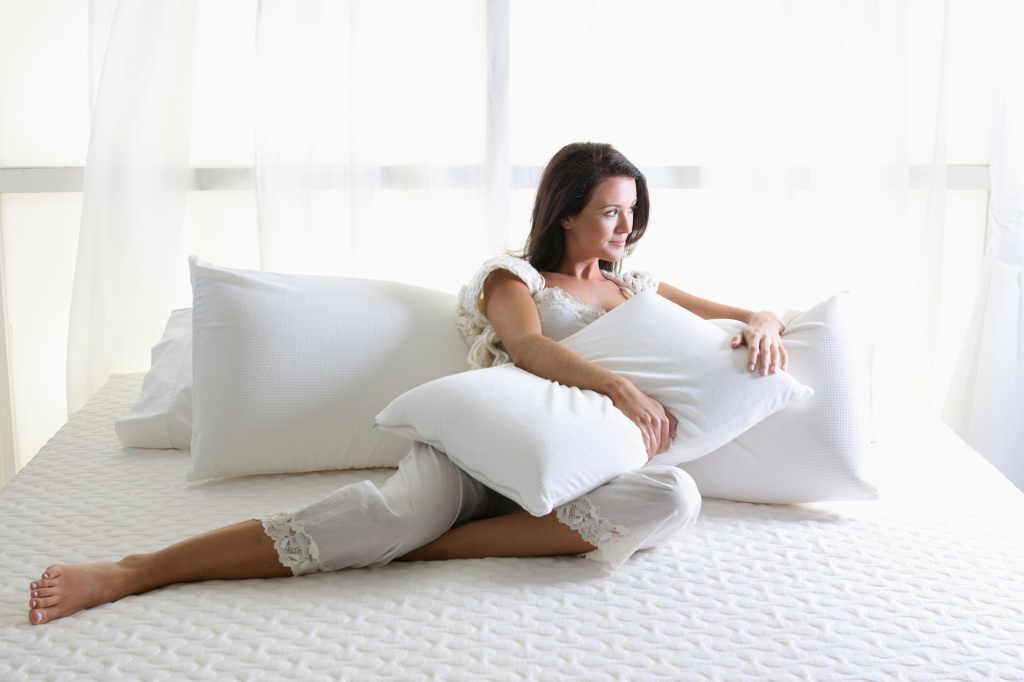
-
Before buying a mattress, lie on it for at least 10-15 seconds. Make sure it's comfortable for you, and also appreciate the quality of the cover and the smell of the product.
-
Use a waterproof mattress topper over the mattress. It will protect the product from stains and damage. Thanks to this, you can return the mattress under warranty if it does not fit you or if there are any problems.
-
If you have any diseases of the musculoskeletal system, consult your doctor and only then buy a mattress.
-
If you decide to purchase a spring mattress, choose products with hardened steel springs. Hardening increases the strength of the metal and the durability of the product.
-
Use thin mattresses (3–5 cm) as mattress toppers to change the firmness of your sleeping area.
-
When choosing a mattress for two, pay attention to products with independent springs (especially if you and your partner have a big difference in weight), or models with two degrees of firmness on one side. You should not buy single-chamber water mattresses or products with a dependent spring block.
-
Use inflatable, padding polyester, foam and cotton mattresses only as a temporary measure and do not let children sleep on them.
How much do mattresses cost
-
The cost of mattresses with independent springs varies from 2,000 to 500,000 rubles. A good quality product can be found for 8000-16000 rubles.
-
Prices for mattresses with a dependent spring unit are 2,000-100,000 rubles, but most of these products will cost about 5,000-10,000 rubles.
-
The cost of springless models depends on the type of filler and the number of layers. For example, latex products can cost RUB 5,000–195,000, and coconut coir products can cost RUB 2,000–88,000.
-
Inflatable models can be found for 1,000-13,000 rubles, and two-season mattresses for 10,000-60,000 rubles.
In the following articles, our experts tell you how to choose bedding and the secrets of choosing a blanket – comparing fillers.
Attention! This material is the subjective opinion of the authors of the project and is not a purchase guide.

